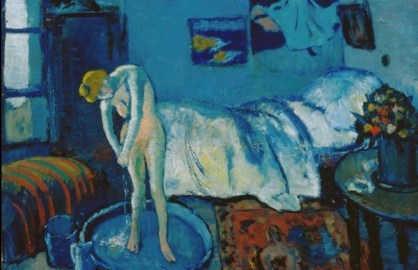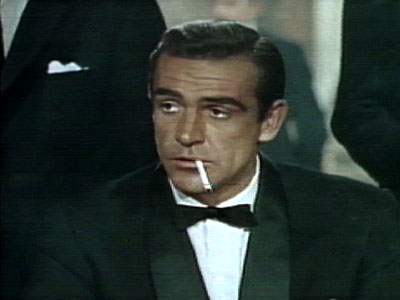Monster Mash: Picasso Meets Degas at the Clark

Growing up, I spent many a rainy or wintry Saturday afternoon watching classic old horror films such as Frankenstein Meets the Wolf Man or Dracula Vs. Frankenstein. It always seemed that one monster inevitably ran into another. Modern museum blockbuster exhibitions often have the same feel as they try to pit one monster talent versus another in their galleries. For example, in 2003, the MoMA’s Matisse Picasso squared off the two modern heavyweights so closely even the “versus” was superfluous. The Philadelphia Museum of Art’s current show Late Renoir could easily be retitled Renoir Meets Matisse or Renoir Vs. Picasso. Pablo Picasso enters the art history ring again in the Sterling and Francine Clark Art Institute’s Picasso Looks at Degas, the first exhibition to pair those two artists and study the latter’s influence on the former. This monster mash of influence and difference illuminates both artists in a fresh way that’s downright scary.
As curators Elizabeth Cowling and Richard Kendell write in their “Introduction” to the catalogue, the young Picasso grappled with Degas influence as their careers overlapped, but even after Degas’ death, “the mature Picasso continued to revisit Degas’ work in his imagination. Whether represented in delicate drawings that recalled Picasso’s youth or in dramatic canvasses and sculptures that seemed to push these media to their limits, bathers and ballet dancers in particular emerged from his studio to pay subtle, sporadic homage to his Impressionist forebear.” This “sporadic homage” in all its subtlety comes across beautifully in the exhibition and catalogue. Picasso can be called the magpie of modernism in his ability to borrow from many sources, sometimes all at once. To untangle that bird’s nest of influence is no easy task, and Picasso Looks at Degas meets the challenge.
Kendall’s essay, “Neighbors in Montmartre,” recounts how the two artists lived near one another for a time but never met. They did, however, share a common dealer in Ambroise Vollard. Frequenting the same theaters, cafes, and other entertainments, Picasso and Degas frequently painted the same subjects. When Picasso painted The Blue Room (The Tub) in1901, he most likely had seen through the artistic “underground” in Paris examples of similar treatments by Degas. Even Degas’ love of ballet finds a match in Picasso’s work when the Spaniard met and fell in love with ballet dancer Olga Khokhlova in 1917. They married one year later, just as Degas’ estate was sold off after his death, revealing to the public the then-surprising number of ballet pictures Degas had done in his later years. Kendall examines how works such as Degas’Little Dancer Aged Fourteen influenced radical works by Picasso such as Les Demoiselles d’Avignon in 1907. Picasso “became fixated at a relatively early stage on the figure of a naked, stylized young woman who steps forward into the composition,” Kendall writes of the Little Dancer’s place in Les Demoiselles.
In “The Rebirth of Venus: Women at Their Toilette,” Cowling sees influence but not exclusivity in Degas’ hold over Picasso’s imagination. “Images of women washing their bodies and combing their hair recur sporadically, rather than constantly in [Picasso’s] work, and, when they appear, Degas was often a chosen reference point,” Cowling writes. “But Degas was rarely the only reference point, for the motifs had so long and full a history that other artists, such as Ingres, often stood metaphorically should-to-shoulder with him in Picasso’s fertile imagination.” In such constructions rest the difficulty of analyzing how Picasso “looked” at Degas, but the curators’ and essayists’ deft handling of these entanglements and attachments make it look easy. This is not an easy point-to-point influence show and requires work on the part of the viewer, but the Clark meets willing students more than halfway.
The final chapter of Picasso’s looking at Degas stems from Picasso’s purchase in 1958 of monotypes by Degas depicting brothel scenes. Picasso called them “the best work things [Degas] ever did.” In 1971, Picasso revisited those lurid monotypes in drawings of his own that placed Degas at the scene of their creation. In the introduction, Cowling and Kendall see Picasso inserting Degas into the brothels “sometimes playfully, sometimes cruelly, sometimes sympathetically.” In a later essay, Cowling imagines the remimagined brothel scenes with the artist present as a type of dialogue. Noting that “Picasso was flagrant where Degas suggested,” Cowling suggests that “Picasso may have also seen himself as liberating Degas from the restraints of his period by granting him the license of the permissive 1960s… Rather than being a criticism of Degas’s reticence, the unabashed projection is a measure of the completeness of the identification through absorption, Degas has become an alter-ego.” Picasso thus “became” Degas in later years in a creative act of ingestion.
Covering painting, drawing, sculpture, and even photography, Picasso Looks at Degas gives us a full frontal and in the round view of both artists. Like any dialogue, there is agreement and disagreement between Degas and Picasso visible in their art, but there can only be agreement that the Clark has added a fresh and significant chapter to the study of Picasso and Degas. In this clash of the titans, we’re all winners.
[Image:The Blue Room (The Tub), 1901, by Pablo Picasso. Oil on canvas, 50.5 x 61.6 cm. The Phillips Collection, Washington, D.C. Acquired 1927 (1554). © 2010 Estate of Pablo Picasso/Artists Rights Society (ARS), New York.]
[Many thanks to the Sterling and Francine Clark Art Institute for providing me with the image above from and a review copy of the catalogue to Picasso Looks at Degas, which runs through September 12, 2010.]





